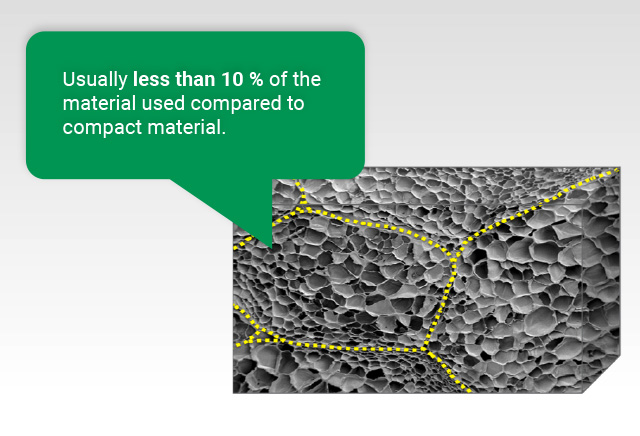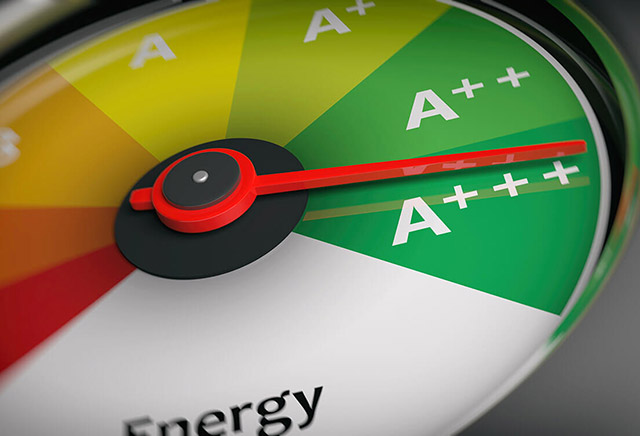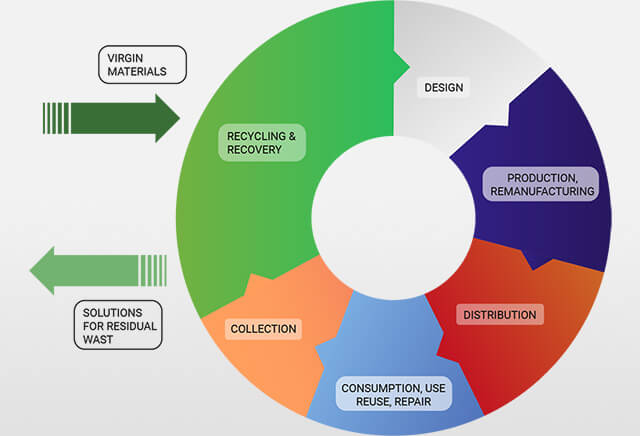The Material EPP – Environmentally friendly and harmless
How can we meet the needs of the present without risking that future generations will not be able to meet their needs? EPP provides an answer to this question. In terms of environmental protection and sustainability, in particular, expanded polypropylene stands out due to its minimal consumption of resources in production and processing, in addition to the existing recycling solutions for components. As a lightweight material, EPP helps to conserve resources, as lighter vehicles consume less fuel, for example, and lightweight packaging can increase the payload that trucks can transport. In terms of production and processing, as well as application and recycling options, EPP does justice to the idea of a modern circular economy.
EPP and the circular economy
The goal is to ensure that EPP plastic is returned to the materials cycle again and again. When a product made from expanded polypropylene is no longer needed, it can be shredded into regranulate and then used to manufacture injection moulded and extruded products. The material itself therefore continues to exist, but over time it takes on a variety of shapes and forms. The use of recycled material in the production of EPP foam beads is a focal point of current developments.
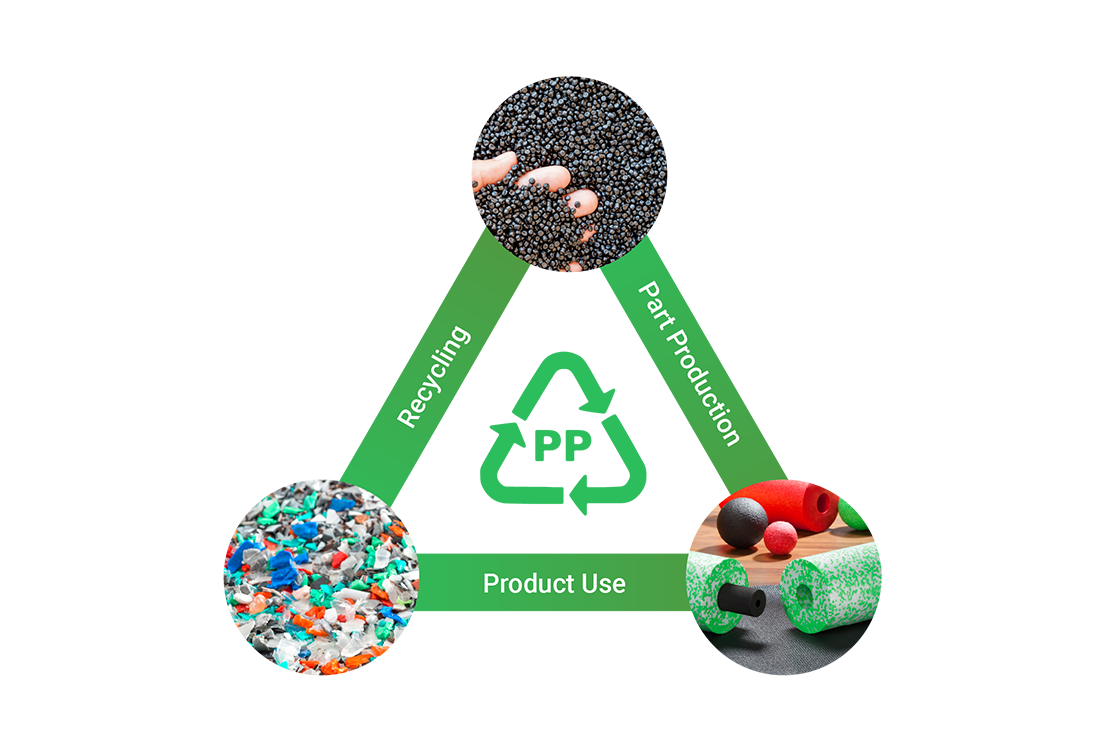
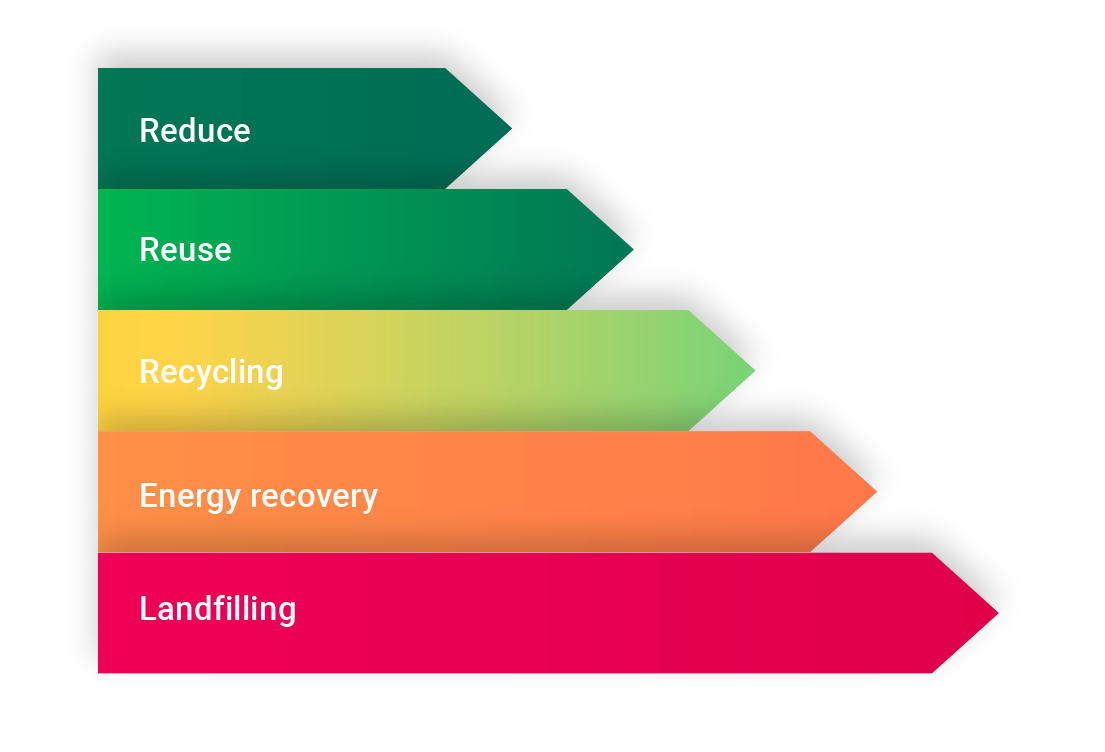
EPP and the waste hierarchy
The material EPP fully complies with the ideas behind recycling management and waste laws and the associated waste hierarchy.
- Reduce: as a foam, which mainly consists of air, EPP contributes to minimising the use of resources.
- Reuse: EPP products are durable and can be reused many times.
- Recycling: EPP can be recycled in the PP materials life cycle.
- Energy recovery: EPP has a high heat value (> 80% of crude oil).
- Landfilling: is not indicated at all due to the options mentioned above.


